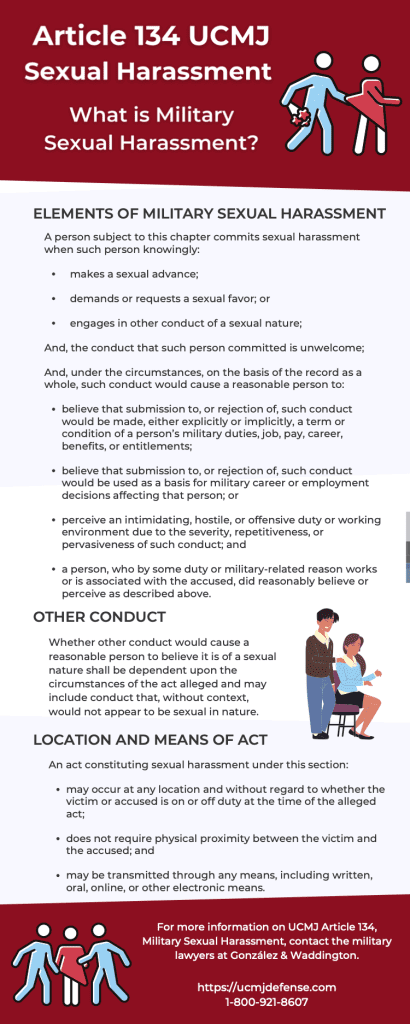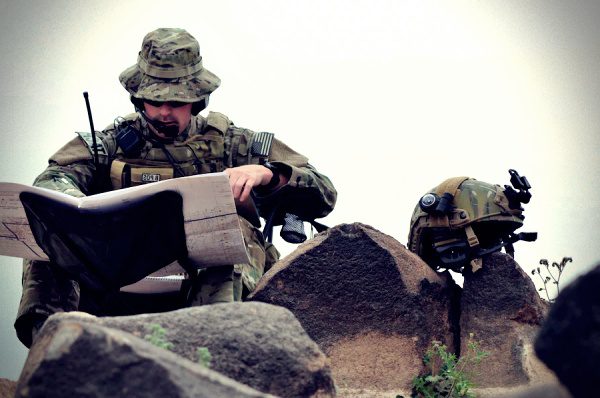Safe to Report Act is Designed to Stop Military Sexual Assault and Sexual Harassment
Co-led by Reps. Speier and Bacon and Senators Gillibrand and Grassley
The Safe to Report Act would create a military-wide “Safe to Report” policy to make it easier for sexual assault survivors to come forward.
Why is this bill needed?
Currently, fear of punishment or retaliation for minor collateral misconduct dissuades sexual assault victims from reporting. However, infractions like curfew violations or underage drinking should not stand in the way of providing assault survivors with needed services or prosecuting perpetrators.
This policy would encourage survivors to come forward and show that the military makes combating sexual assault a priority. As the number of sexual assaults continues to rise across the military, aggressive actions are needed to increase reporting further and shift the culture.
The U.S. Air Force Academy has successfully used its “Safe to Report” policy to encourage more reporting and shift the culture around assaults.
Military Sexual Crimes
- Rape
- Aggravated Sexual Contact
- Sexual Assault
- Abusive Sexual Contact
- Indecent Act
- Sexual Abuse of a Child under Article 120b
- Indecent exposure under Article 120c
- Child Pornography
How does it work?
The bill would empower survivors to report by ensuring that alleged sexual assault victims could not punish them for minor collateral misconduct discovered due to the sexual assault investigation or committed around the same time as the sexual assault unless aggravating circumstances exist.
What constitutes minor collateral misconduct?
The bill defines minor collateral misconduct as:
- Improper use or possession of alcohol;
- Consensual intimate behavior or fraternization;
- Presence in an off-limits area; and
- Such other misconduct as the Secretary of Defense shall specify.
What is the legislative history of this issue?
Amendments creating a Department-wide “Safe to Report” program written by Rep. Speier and Sen. Gillibrand were included in the House and Senate-passed FY20 NDAAs but were removed during final conference negotiations.
SECRETARY OF DEFENSE
SEP 22, 2021
MEMORANDUM FOR SENIOR PENTAGON LEADERSHIP
COMMANDERS OF THE COMBATANT COMMANDS DEFENSE AGENCY AND DOD FIELD ACTIVITY DIRECTORS
SUBJECT: Commencing DoD Actions and Implementation to Address Sexual Assault and Sexual Harassment in the Military
Since my first full day as Secretary of Defense, I have been clear that we must do more to eliminate sexual assault and sexual harassment from the ranks. I started from the outset that this is a leadership issue, and we will lead.
Over the past seven months, the Department has made progress on a set of actions to evaluate our installations, assess compliance with existing policy, comprehensively improve our efforts at the installation level, take the initial steps to establish a violence prevention workforce, and initiate changes to the military justice process governing the handling of sexual assault and sexual harassment cases. I also established the 90-day Independent Review Commission (IRC) on Sexual Assault in the military, which provided the Department a set of comprehensive and actionable recommendations to improve our approach in four lines of effort: accountability, prevention, climate, and culture, and victim care and support.
In keeping with my intent to accept the IRC recommendations wherever possible, the Deputy Secretary has developed a tiered implementation roadmap in consultation with the uniformed and civilian leadership of the Department. I approve the roadmap, which is attached, and expect Department leaders to move swiftly and deliberately to implement it.
This includes the following actions across four Tiers:
• First, the Under Secretary of Defense for Personnel and Readiness (USD(P&R)) will issue enterprise-wide guidance for Tier 1 by October 13, 2021. Tier 2 guidance will be released by November 12, 2021. Guidance for Tiers 3 and 4 will be released by December 15, 2021;
• Then, each of the Military Services and relevant Components will develop implementation plans and resource mapping for Tier 1 by November 12, 2021; Tier 2 by December 15, 2021; and Tiers 3 and 4 by January 31, 2022;
• The USD(P&R) will develop an Outcome Metrics Evaluation Report by May 1, 2022, to track effectiveness and progress of implementation of all Tiers; and
• The USD(P&R), in consultation with the uniformed and civilian leadership of the Department, will assess the roadmap formally no less than twice annually and recommend any adjustments to the Deputy Secretary through the Deputy’s Workforce Council (DWC). The DWC will meet quarterly to monitor implementation progress and timelines wherever possible.
The next steps we take are critical to maintaining our momentum. First, we will build back the trust of our personnel through demonstrable progress, clear and enduring implementation mechanisms, increased transparency, and continued senior leader involvement.
I expect Department leaders to talk about this work with our total DoD workforce to create shared understanding and purpose. We must be willing to have difficult conversations. Our readiness depends on it. Our people deserve it.
No single action the Department can take will fix this problem. However, we are ending the scourge of sexual assault, and sexual harassment in the military demands strong leadership across the enterprise.
We have a true opportunity to lead. And we will.

Click here for an infographic on Article 134 UCMJ Sexual Harassment in the Military
Introduction
In January 2021, President Biden directed Secretary of Defense Lloyd Austin to launch a commission to pursue solutions to sexual assault in the military. Accordingly, on February 26, 2021, Secretary Austin launched the Independent Review Commission on Sexual Assault in the Military (IRC). On July 2, the IRC published their report. Secretary Austin directed Deputy Secretary Hicks to develop an implementation roadmap within 60 days, with a strong bias towards accepting all recommendations where possible. The Secretary approved this roadmap on September 22, 2021.
The enclosed Implementation Roadmap is the Department’s strategic plan to implement all IRC recommendations, with appropriate modifications to ensure effective implementation, integrated with several actions directed by Secretary Austin. The objectives of this tiered roadmap are to implement these key actions as rapidly as possible while ensuring we can deliver durable and meaningful outcomes.
The Department’s initial efforts will focus on Tier 1, the foundation of the Implementation Roadmap. A comprehensive timeline of actions is outlined in the Way Forward section. Implementation of Tier 1 begins immediately with the following actions:
• By October 13, 2021: The Under Secretary of Defense (Personnel & Readiness) (USD(P&R)) will issue enterprise-wide guidance for Tier 1.
• By November 12, 2021: Each of the Military Services and relevant components will develop implementation plans and resource mapping for Tier 1.
• By December 15, 2021: The Military Services and relevant components will begin implementing their plans for Tier 1 actions. Initial cost estimates to implement the roadmap are approximately $4.6 billion, from FY 2022 through FY 2027.[1]. Additional costs that could be incurred in FY 2028 – FY 2030 were not calculated.
Transforming DOD’s workforce and addressing issues as complex as sexual harassment and sexual assault requires sustained attention from the Secretary of Defense and most senior leadership. To ensure this level of attention, the Secretary has directed the Deputy’s Workforce Council (DWC), chaired by the Deputy Secretary of Defense and the Vice Chairman of the Joint Chiefs of staff, to review progress every quarter and ensure that the Department continues to pursue the most effective and practical pathways to implementation.
He will hold leadership at all levels accountable.
Background
The implementation roadmap herein summarizes the Department’s strategic plan to implement the recommendations, as appropriately modified, of the Independent Review Commission (IRC) on Sexual Assault in the Military. The roadmap accepts the IRC’s recommendations, with adjustments to ensure effective implementation only as noted by the phrase “[REVISED]” below. It directs a holistic approach to their implementation across four tiers, with the preponderance of effort and resources focused on Tier 1. Based on timelines estimated, all recommendations would be implemented by Fiscal Year (FY) 2030, with the prioritized initial tier implemented by the end of FY 2027. The timelines are a conservative estimate, and in many cases, account for time to fully implement across the Reserve components. The Department is committed to completing implementation on a faster timeline where possible.
The IRC provided the Department with 28 recommendations, 54 sub-recommendations, 5 Cross-Cutting recommendations, and 16 cross-cutting sub-recommendations.
The Department’s implementation roadmap best aligns with the IRC recommendations. It focuses on the necessary foundational investments needed to support sexual assault accountability, prevention programs, this command climate, and the victim support approach, as envisaged by the IRC. In addition, the plan allows for a deliberative implementation strategy to include iterative evaluations throughout the process to assess the effectiveness and progress of early actions and modify as required to ensure impact.
Tiered Recommendation Approach
Four tiers were identified for implementation based on a comprehensive assessment of the recommendations (Figure 1).
1. Tier 1. Implementation of these recommendations (as revised by the Department’s leadership) builds the Department’s basic foundation and infrastructure for best-in practice sexual assault accountability, prevention, and response programs. These recommendations are either IRC-identified priority recommendations or represent the basic infrastructure required to apply necessary best-in-practice strategies. These also include recommendations whose implementation is already underway. (Estimated completion: FY 2027)
2. Tier 2. Implementation of these recommendations is dependent on the execution of a Tier 1 action and builds directly on that Tier 1 infrastructure to apply best-in-practice strategies (e.g., training, education). (Estimated completion: FY 2028)
3. Tier 3. The implementation of these recommendations either is chronologically or practically dependent on the execution of a Tier 2 action, would expand programs and practices within the DoD, or would endure throughout the implementation of recommendations. (Estimated completion: FY 2028[2])
4. Tier 4. Implementation of these recommendations is chronologically or practically dependent on the execution of a Tier 3 action or would expand programs and practices outside of the DoD purview. (Estimated completion: FY 2030)
To implement the approved recommendations, the Department will take an iterative approach with initial emphasis on building the base and foundational infrastructure to ensure a concrete sexual assault and harassment prevention program. Recommendations, as revised by Department leadership, are broken down by Tiers as depicted in Figure 1. Detailed mapping of recommendations to specific tiers is included in Appendix A.3 3 Recommendations are subject to possible further revision by the Department’s leadership before implementation.
Additional Actions:
• By December 15, 2021: The Military Services and relevant components will begin implementing their plans for Tier 1 actions.
• Ongoing: The USD(P&R), in consultation with the uniformed and civilian leadership of the Department, will assess the roadmap formally no less than twice annually and recommend any adjustments to the Deputy Secretary through the DWC.
• Outcome Metrics Evaluation Report: Based on the Implementation Plans provided, USD(P&R) will develop an Outcome Metrics Evaluation Report by May 1, 2022, to track the effectiveness of recommendations. This report will detail outcome metrics, including interim metrics of progress, to ensure recommendation activities are successful and show progress. Where interim metric indicates a lack of progress and/or ineffective implementation, a reevaluation can occur. This report will also include updates to surveys, research, and studies as required to ensure comprehensive evaluation is possible.
To ensure senior oversight and review progress, Senior Leaders will convene through the DWC quarterly to monitor implementation progress and timelines. These reviews will ensure actions and resources appropriately reflect the priority placed on driving meaningful progress to counter sexual assault across the Department of Defense.
Appendix A: Recommendations by Tier
Note: All of the recommendations below are subject to revisions as the Department’s leadership may direct.
Tier 1: Estimated Implementation by 2027
The following recommendations build the Department’s basic foundation and infrastructure for a best-in-practice sexual assault prevention and response program.
IRC Priority Recommendations:
• Recommendation 1.1: [REVISED][3] Establish Offices of Special Victims Prosecutors and remove prosecution of sexual assaults and related crimes out of the military chain of command.
• Recommendation 1.2: [REVISED] Independent, trained investigators for sexual harassment and mandatory initiation of involuntary separation for all substantiated complaints.
• Recommendation 2.6 b: USD(P&R), the Services and the NGB should continually review and update all policies that unnecessarily restrict data collection on important populations of Service members.
• Recommendation 4.1 b: Eliminate collateral duty for SARCs and SAPR VAs, with exceptions for ships, submarines, and isolated installations.
• Recommendation 4.3 a: Implement the No Wrong Door approach to sexual harassment, sexual assault, and domestic abuse across the Services and NGB.
• Recommendation 4.3 c: Allow survivors flexibility to take non-chargeable time off for seeking services or time for recovery from sexual assault.
• Recommendation 4.3 d: Increase victim agency and control of the response process by maximizing adherence to survivor preference on reporting status and centering survivor preferences in expedited transfers.
• Cross-Cutting Recommendation 1: DoD should immediately make sexual harassment victims eligible for SAPR services and undertake a review of all policies and structures tasked with addressing elements of the military’s sexual harassment response.
• Cross-Cutting Recommendation 3. c: USD(P&R) should immediately publish the issuance of DoD Instruction (DoDI) 6400.06, “Domestic Abuse Involving DoD Military and Certain Affiliated Personnel.”
• Cross-Cutting Recommendation 5: [REVISED] The Secretary of Defense should establish a Senior Policy Advisor for Special Victims. The Senior Policy Advisor should be supported by the new position of the DoD Special Victim Advocate.
Workforce Foundation Recommendations:
• Recommendation 2.2 b: USD(P&R) should develop a professional credential for the prevention workforce.
• Recommendation 2.2 c: The Services should determine the optimum full-time prevention workforce and equip all echelons of active duty, reserve, and guard organizations.
• Recommendation 4.1 a: Move SARCs and SAPR VAs from the command reporting structure.
• Cross-Cutting Recommendation 2: DoD must undertake a comprehensive approach to professionalizing, strengthening, and resourcing the workforce for SAPR across the board.
System Foundation Requirements
• Recommendation 1.5: judge-alone sentencing in all noncapital general and special courts-martial and establishment of sentencing parameters.
• Recommendation 1.6: Expedite processing of proposed Executive Orders regarding military justice, including those currently awaiting issuance related to sexual assault, sexual harassment, and other special victim crimes.
• Recommendation 1.7 d: [REVISED] The selection method of court-martial panel members should be revised.
• Recommendation 2.5 b: [REVISED] The Services and the NGB should employ virtual platforms to support all Service members.
• Recommendation 2.7 a: The NGB should develop Army National Guard and Air National Guard prevention strategies aligned with DoD’s Prevention Plan of Action, based on the National Guard’s unique construct and missions
• Recommendation 3.8: The Services should publish the nature and results of all disciplinary actions related to sexual misconduct and disseminate this information to troops periodically.
• Recommendation 4.2 c: Expand access to CATCH to include victims of sexual harassment and enable Service members to self-service access to CATCH.
• Recommendation 4.2 e: Amplify victims’ rights and services in the post-trial period.
• Cross-Cutting Recommendation 4. g: DoD should require the Services and the National Guard Bureau to publish data for all sexual harassment complaints.
Directed Studies for Combating Military Sexual Harassment
• Recommendation 1.8: Study caseloads to attain the optimum timeline for the military justice process.
• Recommendation 2.5 a: The Services and the NGB should institute a pilot program to link Service members with resources and support.
Actions Currently Underway
Recommendation 1.3: [REVISED] Study of judge-ordered Military Protective Orders for victims of sexual assault and related offenses.
Recommendation 1.4: Professionalized career billets for military justice personnel handling special victim crimes.
Recommendation 1.7 a: [REVISED] The Military Justice Review Panel has been directed to study Article 32 Preliminary Hearings.
Recommendation 1.7 b: [REVISED] The Military Justice Review Panel has been directed to study Article 34, Advice to Convening Authority Before Referral to Trial. Recommendation 1.7 c: [REVISED] The Joint Service Committee on Military Justice has drafted a proposed Executive Order to establish a preponderance of the evidence standard for non-judicial punishment.
Recommendation 1.7 e: The Secretary of Defense should direct the Services to establish funding appropriate for defense counsel control of their resources.
Recommendation 1.7 f: Article 128b of the UCMJ should be amended to include dating violence.
Recommendation 2.1 a: USD(P&R) should define the competencies leaders must have to oversee prevention.
Recommendation 2.2 a: USD(P&R) should develop a dedicated and capable prevention workforce model.
Recommendation 3.3 c: Hold Service members appropriately accountable for cyber-harassment and other forms of technology-facilitated sexual harassment and sexual assault.
Recommendation 4.2 a: Increase access to and visibility of civilian community-based care.
Recommendation 4.3 b: Institute a “Commander’s Package” from the SAPR VA with victim care and support recommendations.
Recommendation 4.3 e: Study our allies’ methods to make amends to survivors, including a refreshing engagement to acknowledge the harm and potential victim compensation.
Recommendation 4.4 a: Establish a Defense Sexual Assault and Sexual Harassment Center of Excellence that administers a core trauma and response training curriculum for all SAPR VAs and SARCs, chaplains, and other response personnel.
Recommendation 4.4 b: Develop training to build the capacity of SARCs and SAPR VAs to provide culturally competent care to Service members from communities of color, LGBTQ+ Service members, religious minorities, and men
Cross-Cutting Recommendation 4. b: DoD should require collecting data regarding sexual orientation and gender identity on the WGRA and WGRR.
Tier 2: Estimated Implementation by 2028
Implementation of the following recommendations either is chronologically or practically dependent on the execution of a Tier 1 action or will build on the infrastructure to apply best-practice strategies (e.g., training, education, etc.).
Dependent on Tier 1 Activities for Combating Military Sexual Assault
• Recommendation 2.1 c: The Services and the NGB should equip all leaders to develop and deliver informed prevention messages in formal and informal settings.
• Recommendation 3.6: Building a climate for reducing sexual harassment and sexual assault as a fundamental leader development requirement.
• Recommendation 4.1 c: Explore the co-location of SAPR and SHARP with other special victim services, such as FAP, to improve coordination, collaboration, and consistency in victim support.
• Cross-Cutting Recommendation 3.a: [REVISED] Designated independent judge advocates should replace commanders in deciding whether a court-martial should try a charge and, if so, whether by a special or general court-martial (i.e., the referral decision) in domestic violence cases, as the IRC recommends for sexual assault, sexual harassment, and other special victim crimes.
• Cross-Cutting Recommendation 4.c: DoD should ensure the WGRA and WGRR publish both past-year prevalence, before joining the military prevalence, and lifetime prevalence of sexual assault by race and ethnicity, sexual orientation, and gender identity.
• Cross-Cutting Recommendation 4.e: DoD should ensure the WGRA and WGRR publish sexual harassment prevalence data by race and ethnicity, sexual orientation, and gender identity.
• Cross-Cutting Recommendation 4. i: DoD should ensure that military members’ workplace and equal opportunity surveys publish past-year prevalence rates for racial/ethnic harassment by gender identity and sexual orientation.
Training, Education, and Leadership Development for Military Sexual Assault:
• Recommendation 2.4: Modernize prevention education and skill-building to reflect today’s generation of Service members.
• Recommendation 3.2: USD(P&R) should direct the Services to educate the force about sexual harassment and sexual assault within the context of the Services’ core values.
• Recommendation 3.5 b: Include a meaningful narrative section in performance evaluations for officers and NCOs.
• Recommendation 4.1 d: [REVISED] Train Independent Duty Corpsmen to be Sexual Assault Medical Forensic Examiners so patient care and evidence collection can be provided in deployed and isolated environments.
• Recommendation 4.4 c: Revise and update training modules on an appropriate response to sexual assault and sexual harassment in PME for officers and NCOs.
Data Collection on military rape, sexual harassment, and sexual assault:
• Recommendation 3.3 a: Collect data to measure the problem of cyber-harassment (and related harms).
• Recommendation 3.5 a: Use qualitative data to select and develop the right leaders.
• Recommendation 3.7 a: [REVISED] USD(P&R) should develop a standardized “pulse survey” tool that would enable unit-level commanders to collect real-time climate data on sexual harassment and sexual assault from Service members in their units between required administrations of the Defense Organizational Climate Survey (DEOCS).
• Recommendation 3.7 b: The Secretary of Defense should direct the Services to develop a formal system to share climate survey data at the unit level and initiate and evaluate corrective action plans.
• Recommendation 3.7 c: USD(P&R) should accelerate efforts to develop a validated “Climate Benchmark” to measure healthy and unhealthy climate at the unit level.
• Cross-Cutting Recommendation 3.b: DoD should establish a mechanism to track the prevalence of domestic abuse/intimate partner-related sexual assault by collecting information on the victim-perpetrator relationship in the Workplace and Gender Relations Surveys of Active Duty Members (WGRA), and Workplace and Gender Relations Surveys of Reserve Component Members (WGRR).
Tier 3: Estimated Implementation by 2028
Implementation of these recommendations is chronologically or practically dependent on the execution of a Tier 2 action, expanding programs and practices within the DoD, or enduring throughout the implementation of recommendations.
Dependent on Tier 2 Activities:
• Recommendation 2.1 b: The Services and the National Guard Bureau (NGB) should develop and hold leaders appropriately accountable for prevention.
• Recommendation 3.7 d: The Secretary of Defense should assess whether current DoD policies, relevant components, and the Service-level Equal Opportunity workforce can help commanders resolve climate issues.
Internal Expansion Activities:
• Recommendation 2.3 a: The Services and the NGB should resource and implement prevention strategies at organizational and community levels.
• Recommendation 2.3 b: USD(P&R) should identify a non-clinical OSD-level Office of Primary Responsibility for alcohol policy and develop relevant policy guidance and oversight.
• Recommendation 2.6 c: The Secretary of Defense should immediately authorize operational testing of the Air Force Compatibility Assessment, or similar tool, with a
cross-service pre-accession sample, allowing for important research and intervention development.
• Recommendation 3.3 b: Educate leaders on cyber harassment and technology-facilitated sexual harassment and sexual assault.
• Recommendation 3.4 a: Elevate and standardize the gender advisor workforce.
• Cross-Cutting Recommendation 4.j: DoD should evaluate ways to better collect data, via existing DoD-wide surveys, on the role of gender in the experience of racial/ethnic harassment and discrimination in the military.
• Cross-Cutting Recommendation 4.k: DoD should commission qualitative research to better understand the experiences of racial/ethnic minority servicewomen and their perceptions of climate, attitudes, and experiences with sexual assault and sexual harassment, and gender and racial discrimination.
• Cross-Cutting Recommendation 4.1: DoD SAPRO should dedicate a segment of its iterations of the Military Service Gender Relations (MSGR) Focus Groups to understand the experiences of racial and ethnic minority service members and survivors.
Enduring Activities:
• Recommendation 3.1: USD(P&R) should codify in policy and direct the development and implementation of metrics related to sexual harassment and sexual assault as part of readiness tracking and reporting.
Tier 4: Estimated Implementation by 2030
Implementation of these recommendations is chronologically or practically dependent on the execution of a Tier 3 action or will expand programs and practices outside of the DoD purview.
Dependent on Tier 3 Activities:
• Recommendation 2.6 a: DoD should establish a dedicated research center for the primary prevention of interpersonal and self-directed violence.
• Recommendation 2.6 d: USD(P&R) should commission research on gender and masculinities to develop effective social marketing strategies to facilitate primary prevention efforts.
• Recommendation 2.8: USD(P&R) should update the Department’s prevention strategy, including the DoD Prevention Plan of Action, to incorporate approved IRC recommendations.
• Recommendation 3.4 b: Use qualitative data as indicators for Defense Objective One of the WPS Strategic Framework.
• Recommendation 3.4 d: Review and revise Professional Military Education (PME) and DoD schoolhouse curricula to mainstream WPS priorities.
• Recommendation 3.4 e: Congress should support DoD’s inclusion of Personnel & Readiness in WPS implementation and codify in legislation.
• Recommendation 4.4 d: Use an action research model to identify root problems, test interventions, and create best practices with survivors’ input.
• Recommendation 4.2 b: Authorize Service members to access the full spectrum of VA services for conditions related to military sexual assault and sexual harassment confidentially and without a referral.
• Recommendation 4.2 d: [REVISED] Create survivor-led peer support programs that allow in-person, virtual, and telephone interaction.
• Cross-Cutting Recommendation 4.d: [REVISED] DoD SAPRO should work with the CDC Division of Violence Prevention to request that future reports of the military supplement to the National Intimate Partner and Sexual Violence Survey includes a breakdown of past-year and lifetime prevalence by race/ethnicity.
Implementation-only estimates were developed by the Services and relevant OSD components, with sustainment estimates calculated by the Office of Cost Assessment Program Evaluation and each Military Department
All recommendations within Tier 3 will be complete by 2028 except recommendation 2.6.c, which requires an extensive assessment and pilot of a character assessment tool across the Department.
[REVISED] indicates a recommendation where the Department has made a revision or slight modification to the original IRC recommendation to ensure effective implementation within the Department.All recommendations within Tier 3 will be complete by 2028 except recommendation 2.6.c, which requires an extensive assessment and pilot of a character assessment tool across the Department.
An article from the Federal News Network, written by Scott Maucione on November 2, 2021, “DoD adds new protections from minor infractions for military sexual assault victims reporting crimes,” sums up the new law. Click here for the full article.
Victims of sexual assault in the military now have more options to protect themselves from minor infractions if they decide to report a crime to their command.
A new policy from the Defense Department, and mandated by Congress, look past minor violations about the environment a victim may have been in at the time of the assault and may discourage the victim from reporting for fear of retribution.
Minor infractions include underage drinking, being out past curfew, and being in “unprofessional” relationships.
The Safe-to-Report policy, which was signed on Oct. 25 by Gilbert Cisneros, DoD undersecretary for personnel and readiness, is similar to policies many colleges and universities have implemented across the nation to prioritize saving lives and reporting sexual assaults.
“Currently, fear of punishment or retaliation for minor collateral misconduct dissuades sexual assault victims from reporting. However, infractions like curfew violations or underage drinking should not stand in the way of providing assault survivors with needed services or prosecuting perpetrators,” Rep. Jackie Speier (D-Calif.), chairwoman of the House Armed Services Personnel Subcommittee, said. “This policy would encourage survivors to come forward and show that the military makes combatting sexual assault a priority.”
Combating Military Sexual Harassment
The DoD memo requires each military branch and the National Guard to issue their Safe-to-Report policies to detail the processes and procedures for identifying minor and non-minor offenses.
The memo outlines “aggravating circumstances” that may make an offense committed by the victim non-minor.
“Aggravating circumstances increase the gravity of alleged collateral misconduct or its impact on good order and discipline,” the memo states. “Commanders shall take into account these factors in determining whether the alleged collateral misconduct is minor.”
Those circumstances include causing or threatening to cause failure in a military mission or objective, threatening the health and safety of another person (not including acts of self-harm or self-defense), or acts that damage government or personal property (except in self-defense).
“The existence of aggravating circumstances does not automatically result in making the alleged collateral misconduct non-minor,” the memo reads. “The command retains the discretion whether, or not, to take disciplinary action against a victim for alleged collateral misconduct where aggravating circumstances render the misconduct more serious.”
Military Sexual Assault
Certain mitigating circumstances can decrease the gravity of the misconduct. For example, commanders are to consider the victim’s age and experience level, whether the suspect is a person of authority if there was stalking or hazing, and if the misconduct was known to the command before the assault.
Military commanders will consider if the collateral misconduct could be caused by sexual assault trauma. As an example, an alleged victim getting wasted on booze or illegal prescription medication and driving a car can blame her decision on being an alleged victim in order to avoid facing responsibility for her criminal acts. She simply has to blame her crimes on “emotional trauma” and she will get a get out of jail free card for the rest of her career.
Military commanders and their military lawyers will determine if an infraction is minor or not. Currently, legislation moving through Congress removes the prosecution of sex crimes and felonies out of the chain of command and gives prosecution authority to JAG lawyers.
Citation: federalnewsnetwork.com/defense-main/2021/11/dod-adds-new-protections-from-minor-infractions-for-military-sexual-assault-victims-reporting-crimes/





